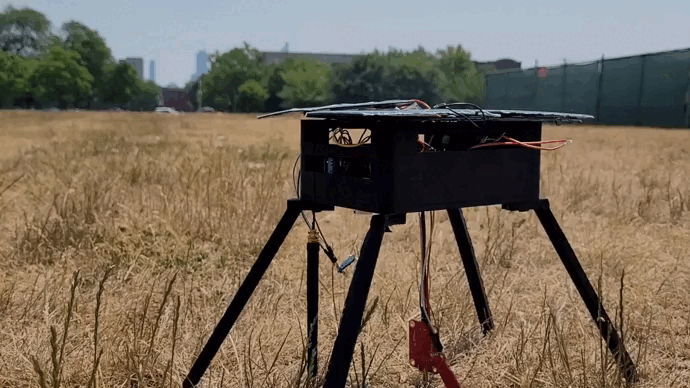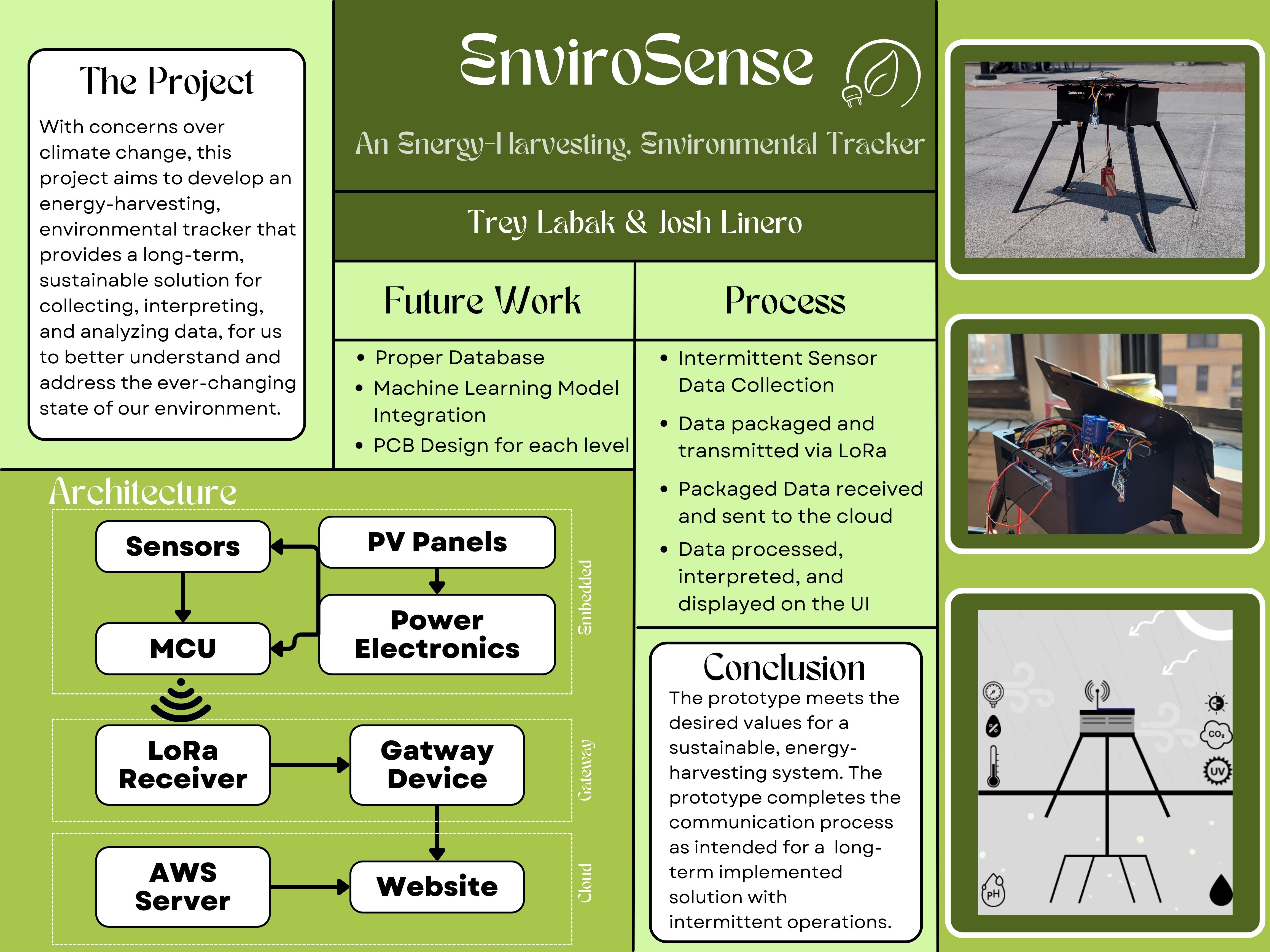this is EnviroSense.
Embedded Systems | C | Python | Energy-Harvesting
An energy-harvesting, environmental tracker that provides a long-term, sustainable solution for collecting, interpreting, and analyzing data.

An energy-harvesting, environmental tracker that provides a long-term, sustainable solution for collecting, interpreting, and analyzing data.

At the core of our project is an energy-harvesting embedded system that serves as an environmental tracker, capable of measuring a variety of parameters including light intensity (luminosity), temperature, humidity, pressure, soil moisture, soil acidity, air quality, and UV radiation. The system is designed to be an advocate for environmental awareness within the local environment where it will be deployed, as well as a long-term implementation research tool for collecting data on the environment over the course of several years to illuminate any changes within the local environment and provide current environmental characteristics and analysis.
EnviroSense is an energy-harvesting, environmental monitoring system designed to gather and analyze data from various sensors in real-time. It consists of three key layers: the Embedded Layer, the Gateway Layer, and the Cloud Layer.
